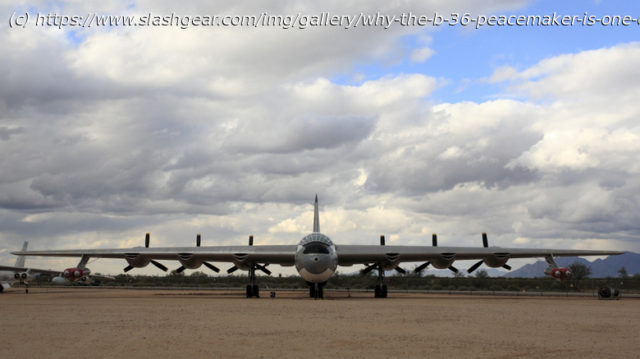Noted historically by high-ranking military personnel as a “billion dollar blunder,” the B-36 Peacemaker was a Cold War-era bomber with a litany of issues.
When discussing historic bombers in American history, the B-36 Peacemaker ranks at the top in terms of size and design flaws. The B-36 was developed in 1941 during World War II and began its service in 1949, lasting only 10 short years before being retired in 1959. Built to fly from the U.S. to Europe without refueling, this long-range bomber was a gigantic aircraft with a 230-foot wingspan and six piston propeller engines that were prone to catching fire.
It took a crew of 15 to operate, and was criticized by both military and political leaders for being too expensive to maintain, costing billions, and too dangerous for the time period. An interesting fact is that the B-36 was actually considered too slow and outdated by the time it was ready for service. Its size and cost didn’t translate to being effective, hence why many call it one of the worst bombers ever made.Cold weather, engine fires, and too many spark plugs
Perhaps the biggest issue with the B-36 Peacemaker is one of its most standout features: the six Pratt & Whitney R‑4360 Wasp Major radial engines.






